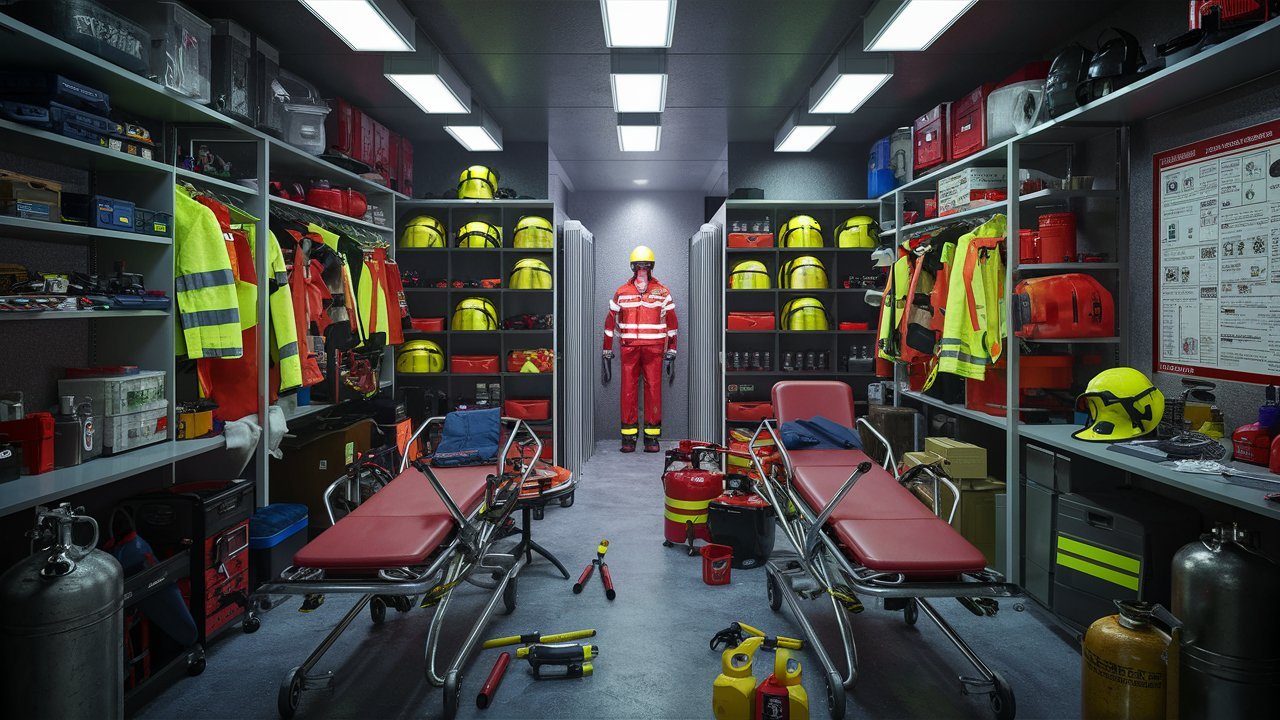In today’s unpredictable world, having a well-equipped emergency equipment room is paramount. But what exactly is an Emergency Equipment Room?
An emergency equipment room serves as a centralized hub for storing essential items and supplies needed during crises. It’s a strategic space designed to facilitate rapid response and ensure the safety of everyone in the vicinity.

Importance of Emergency Equipment Room
In times of crisis, every second counts. Having an organized and fully stocked emergency equipment room can mean the difference between life and death. It ensures that first responders and personnel have immediate access to vital tools and resources, significantly enhancing their ability to handle emergencies effectively.
Components of an Emergency Equipment Room
An effective emergency equipment room encompasses various components, including:
- Medical Supplies: Bandages, first aid kits, medications.
- Safety Gear: Helmets, gloves, goggles, respirators.
- Communication Devices: Radios, phones, walkie-talkies.
- Emergency Lighting: Flashlights, glow sticks, lanterns.
- Firefighting Equipment: Extinguishers, hoses, fire blankets.
Setting Up an Emergency Equipment Room
Location and Design
The location of the emergency equipment room should be easily accessible yet secure. It should be strategically positioned to minimize response times during emergencies. The design should prioritize functionality, with clearly designated areas for different types of equipment.
Essential Equipment and Supplies
When setting up the room, it’s crucial to ensure that it’s stocked with all the necessary equipment and supplies. This includes regularly checking and replenishing items, such as medical supplies, safety gear, and communication devices.
Organizing the Emergency Equipment Room
Inventory Management
Maintaining an accurate inventory is essential for ensuring that the emergency equipment room is always adequately stocked. Implement a robust system for tracking usage, conducting regular audits, and restocking supplies as needed.
Maintenance and Inspections
Regular maintenance and inspections are vital to keep the emergency equipment room in optimal condition. This includes checking equipment for damage, testing communication devices, and replacing expired items.

Training and Protocols
Staff Training
Proper training is crucial for ensuring that personnel know how to effectively use the equipment in the emergency equipment room. Conduct regular training sessions and drills to familiarize staff with emergency protocols and procedures.
Emergency Response Protocols
Establish clear and concise emergency response protocols to guide staff during crises. This includes designated roles and responsibilities, communication procedures, and evacuation plans.
Emergency Equipment Room Checklist
Creating a Comprehensive Checklist
Develop a detailed checklist outlining all the items and supplies that should be included in the emergency equipment room. Regularly review and update the checklist to reflect changes in equipment or protocols.
Regular Updates and Reviews
Schedule regular reviews and updates of the emergency equipment room to ensure that it remains effective and up-to-date. This includes evaluating the efficiency of existing systems and making improvements as needed.
Emergency Equipment Room Best Practices
Accessibility and Visibility
Ensure that the emergency equipment room is easily accessible and clearly visible to all personnel. Use bright colors and signage to make it easy to locate, even in low-light conditions.
Labeling and Signage
Proper labeling and signage are essential for quickly identifying equipment and supplies during emergencies. Use clear and descriptive labels to ensure that personnel can find what they need without delay.
Case Studies
Real-Life Examples
Explore real-life examples of emergency equipment rooms in action, highlighting their effectiveness in mitigating crises and saving lives.
Lessons Learned
Reflect on lessons learned from past emergencies and how they have informed best practices for emergency equipment room management.
Frequently Asked Questions
- What should be included in an emergency equipment room?
- An emergency equipment room should include medical supplies, safety gear, communication devices, emergency lighting, and firefighting equipment.
- How often should emergency equipment rooms be inspected?
- Emergency equipment rooms should be inspected regularly, with maintenance checks conducted at least once a month.
- Who is responsible for maintaining the emergency equipment room?
- Maintenance of the emergency equipment room is typically the responsibility of facility managers or designated safety personnel.
- How can I ensure that my emergency equipment room is always stocked?
- Implement a robust inventory management system and conduct regular audits to ensure that supplies are replenished promptly.
- What should I do if I discover expired or damaged items in the emergency equipment room?
- Remove and replace expired or damaged items immediately to ensure that the room remains fully functional in emergencies.
- Are there any legal requirements or regulations governing emergency equipment rooms?
- Depending on your location and industry, there may be specific regulations or standards that dictate the setup and management of emergency equipment rooms.
Conclusion
In conclusion, an effectively managed emergency equipment room is a critical component of any safety preparedness plan. By following best practices for setup, organization, and maintenance, organizations can ensure that they are well-equipped to handle emergencies and protect lives.

